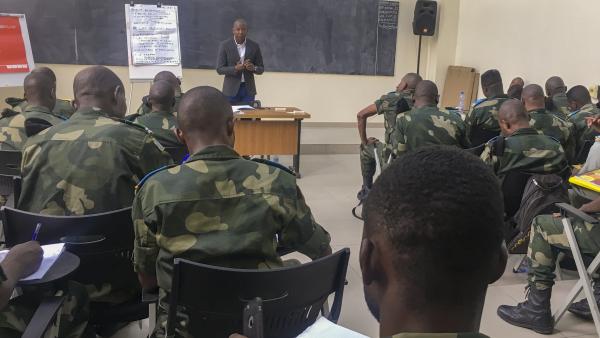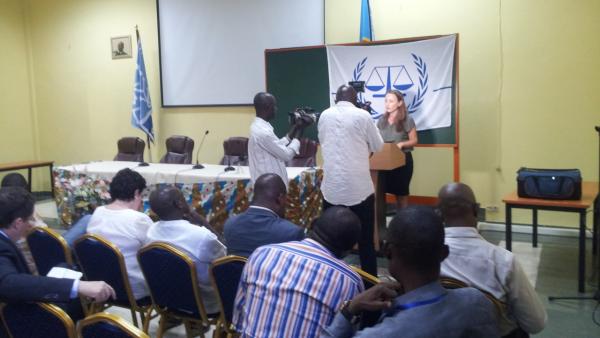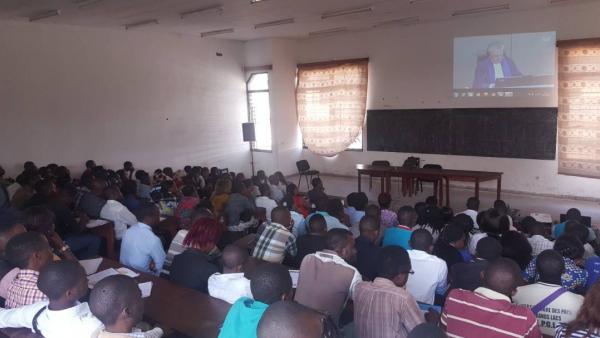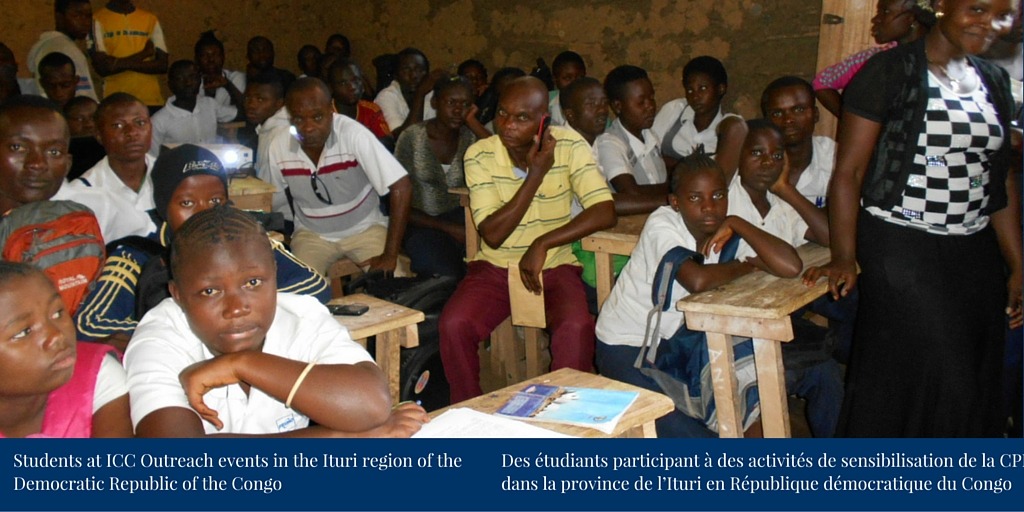
Bunia: “A Day at School with the ICC” campaign reaches over 900 students
With Nicolas Kuyaku
In November and December, as part of the “A Day at School with the ICC” campaign, I visited students in their final year at five schools in Bunia, situated in the Ituri province in eastern Democratic Republic of the Congo. These meetings gave over 900 students aged 17 to 23 and their teachers the opportunity to ask questions about the establishment, powers and mandate of the International Criminal Court. The aim of these informative sessions is to inform students about the role and mission of the Court: to combat impunity worldwide. But this is not our only message. With this campaign, we are also trying to raise awareness among young people about the consequences of recruitment by armed groups, which continue to plague the region.
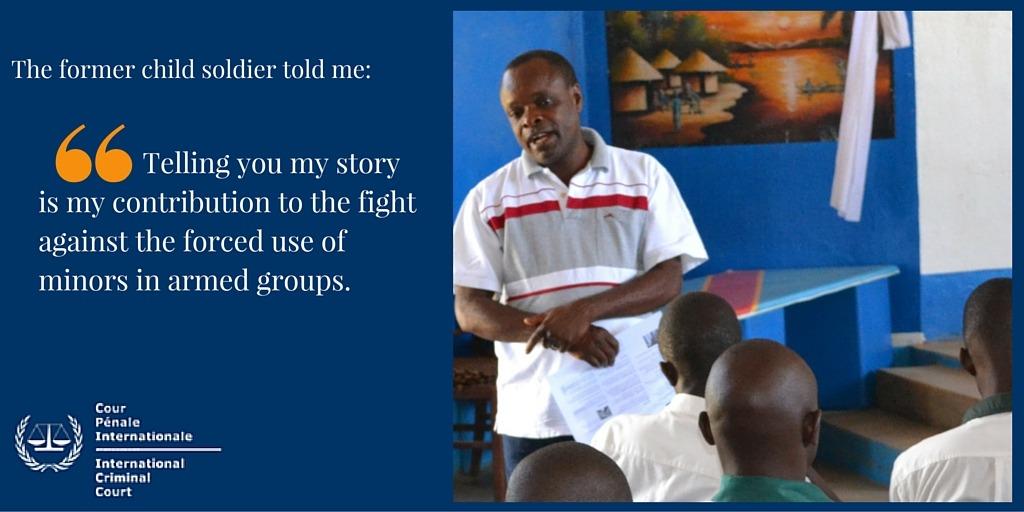
I begin each session by asking the participants, “Have you ever heard of the ICC? If so, how?” This draws the participants out and opens up the discussion. After answering their questions, I show them an extract from the confirmation of charges hearing in the case of The Prosecutor v. Bosco Ntaganda. The students are very interested in the video, as it shows children in militias.
One time when I showed the video, a student recognised the landscape of Rwampara and the areas surrounding Bunia airport, which were used as training camps for the enlistment of minors during the armed conflicts. This allowed me to emphasise that the enlistment and use of children under age 15 is a crime recognised by the Rome Statute. I then asked the students if they knew anyone who had been enlisted.
To my surprise, a 23-year-old student wanted to share her story: she had been enlisted in an armed group.
“I contributed to the success of the group I belonged to by handling military logistics during confrontations with other armed groups in the region,” she said. Then she added, “I regret having interrupted my studies. I was also exposed to many solicitations from the kadogo (child soldiers), who wanted to make me their sex slave. To protect myself, I left the group and went to stay with one of my uncles.” She ended by saying, “I am giving this testimony just to draw your attention to the consequences of enlistment in the militias. It’s a life that deprives children of all the rights they should have, such as social welfare, an education… This is my contribution to the fight against the forced use of minors in armed groups. We mustn’t accept enrolment under any circumstances.”

At the end of her account, the students all commended her for having the bravery to share her personal experience within the militia. I hear many stories like this in the communities I visit.
In another class, one young boy spoke about how he had started out in a local militia. “I decided to join the militia because all my relatives had been killed in the armed conflict. I had no more family support. The commander in charge of the operations accepted me as a new recruit and put me in charge of transporting ammunition and other military items. I played an active role in the hostilities. I also killed other human beings. It’s not my fault. It was an order and I also had to avenge my people.”
One teacher took the floor to condemn the behaviour of warlords who continue to recruit children to the armed groups that are still active in the region. “Only justice can free people and protect their dignity. To effectively combat the scourge of under-age recruitment, the DRC must join in the ICC’s efforts,” he added. When I concluded by saying that a child’s place is with their family or at school, not in armed groups, everyone applauded.
There was keen interest in the participants’ testimonies, which led to wide-ranging discussions about the rights of children, the enlistment of children by armed groups and the fate of the thousands of victims in Ituri.
To bring the sessions to a close, I routinely present the exhibition “Justice Matters”, a collection of photographs which provides an overview of how the ICC and the Trust Fund for Victims help affected communities. The students are particularly interested in the pictures about Bunia, and see proof that the Court really understands their circumstances. The students and teachers do voice some frustrations and concerns about the work of the ICC, and in particular the lengthy court proceedings, the identification of victims and the delays in receiving reparations in Ituri. But overall, at the end of each session, I am always moved and happy that the students have been so captivated by the work of the Court and have had so many questions.
I am also glad on a personal level, of course, that there has been such a broad consensus on and support for the messages warning against child enlistment. This shows that all of these meetings can have a positive effect on these young people, who have also promised to support the work of the Court.
